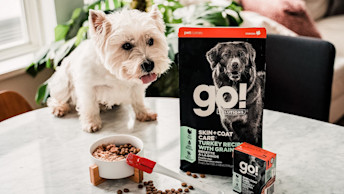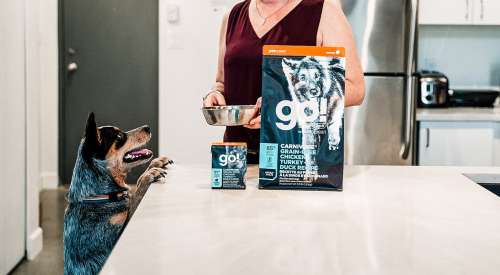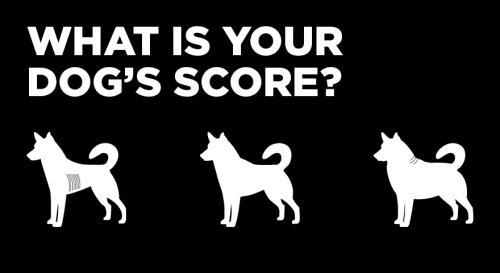August 9, 2021
Feeding Your Dog Kibble and Wet Food: How Much and How Often?

When it comes to knowing how much kibble and wet food to feed our dogs, it can take a bit of trial and error. One of the most frequent questions we get asked is "how much do I feed my dog?" With all the different considerations of weight, activity level, age, and environment, that can be difficult to answer. However, we've compiled some of our top tips to help you decide how much to feed your canine companion.
Check Your Dog's Body Condition
A good starting point is to figure out your dog's current body condition. A body score chart can easily do this to visibly check and see if your dog is average, overweight or underweight This chart will help you determine if your dog needs to gain, lose, or maintain their weight. Next, weigh your dog and record the number so that you can easily track if their weight changes.
If you feed your dog primarily dry food, check the package for the daily feeding guidelines for their weight, age, and activity level. If you wish to provide your loyal companion with a combination of dry and wet food, you should also check to see how much wet food would be required on a daily basis, because you will need to consider all of those calories. Remember, wet food is not as calorically dense as kibble simply because of the moisture levels.
Tip: The feeding guidelines on your dog's food package are listed for their weight and are reported in daily amounts. Once you have found the daily recommended quantities for your dog for each type of food, it's simple math to determine how much of each to feed!
Here's an example:
Let's say you have a 30 lb reasonably active adult dog. You want to feed him a combination of Go! Solutions Skin + Coat Care Chicken Recipe With Grains dry food and Go! Solutions Skin + Coat Care Shredded Chicken Recipe With Grains wet food.
If you want to feed 50% kibble, 50% wet, use the feeding guidelines for each and provide half as much daily. In this example, you would feed ¾ cup of dry and 1 1/4 to 1 3/4 cartons of wet per day.
If you want to feed 75% kibble, 25% wet, use the feeding guidelines for each and calculate how much 75% would be for providing dry and 25% of the feeding guidelines for the wet food.
Adjust these amounts over time to achieve ideal body weight. In addition, we recommend weighing your pet's food for better accuracy.
Treats can add extra pounds to your dog if you aren't careful, so these should never add up to more than 10% of your dog's daily caloric intake.
Remember, paying attention to the feeding guidelines will give you a good idea of where to start. Once you see how these amounts affect your dog's body condition, you can easily adjust up or down to what works best. In the end, ensuring your dog has the proper amount of nutritional intake each day will be an ongoing balancing act. Like people, their weight and body condition will fluctuate with activity level, climate, and age.



